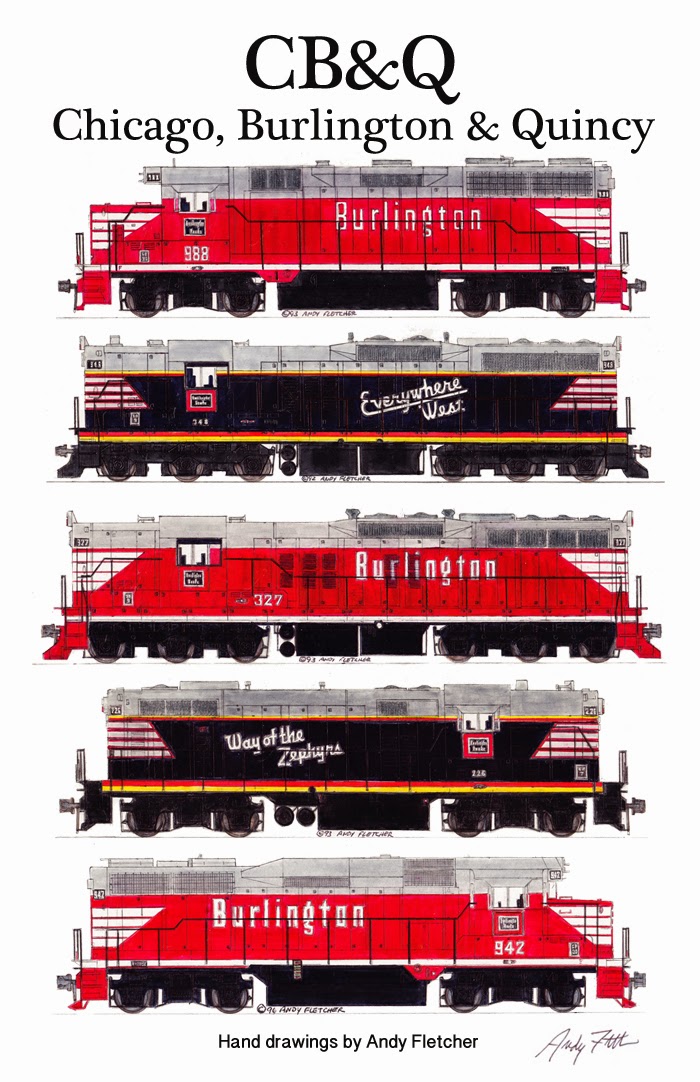When drawing the basic outline of the shell of a Grand Trunk Western GP38AC, you can see that a locomotive starts out as a frame with a series of boxes on top of it. At this stage, it is important to compose your locomotive.
Instead of simply drawing the radiator doors and then the engine room doors, it is important to measure the areas where they go. This further division of the locomotive ensures that you will give each set of doors and the blower duct an accurate amount of room.
Measuring a locomotive's size and shape is the most critical part of the drawing. Each detail down to the horn and plow can be placed accurately, but the eye catches the size and shape of the locomotive first.
Once each area is measured, divide each section of doors. Remember, some doors can be wider than others, so consult your reference materials often.
Continue taking a look at several reference photos of locomotives from the railroad you are drawing. Often, over the years, locomotives of the same railroad begin to have detail differences.
Before placing items such as horns, air conditioners and dynamic brakes, decide if these details are accurate for the railroad you are drawing in a given era. Often, when it comes time to letter and ink the locomotive, it can be frustrating to find that engines in the paint scheme you have chosen do not match the details you have drawn.
It is always exciting to see a few lines turn into a finished locomotive. Remember, measurement is key. Enjoy drawing trains.








